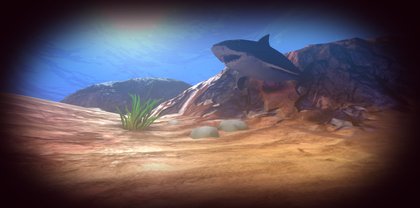

Research indicates that shark populations, including those of the white shark, will dwindle unless measures for their protection are implemented.

Given the lack of reliable data, it has been proposed that protective measures be based on the “precautionary principle”, until more biological information has been collected. The most significant challenge for effectively managing white shark populations stems from the lack of accurate data associated with fecundity, age, growth, and population numbers. They are adaptable predators capable of shifting diet as conditions dictate and may simply move away from an area with little food. Fortunately, the threat of habitat loss is not significant for white sharks. As with most sharks, White sharks are slow-growing producing few young and are therefore highly vulnerable to overfishing. It has been proposed that white sharks should be afforded protection because of their position as apex carnivores in the ocean food web. Regional estimates conducted to date are unreliable. Global population size estimates for this species are unknown.

View shark attacks by species on a world map Conservation This is due primarily to its size, power and feeding behavior. The white shark has been credited with more fatal attacks on humans than any other species of shark. Photo © Florida Museum of Natural History Danger to Humans A set of white shark jaws can be worth thousands of dollars. Specimens are reported every year in gill nets, trammel nets, herring weirs, purse seines, tuna enclosures as well as on surface hooks, bottom longlines and set-lines (Fergusson et al.
Feed and grow fish great white shark skin#
The flesh is often used for human consumption, the skin for leather, the liver for oil, the carcass for fishmeal and the fins for shark-fin soup. Entire specimens, some more than 5m long, have been prepared by taxidermist for public display as well as for private trophy collectors. This is due, in part, to the increasing monetary value placed on their jaws and teeth. Spanish: Tiburón blanco, Jaquentón blancoĭespite their relative rarity, white sharks are frequently caught by humans. Other common English language names are “man eater shark”, and “white death”. The white shark, or “great white”, or “white pointer”, is named for the appearance of dead specimens lying ventral side up, on deck, with their stark white underbelly exposed. 2005).įun Fact: The white shark, along with several other lamniform sharks, is endothermic, or warm-blooded, allowing it to maintain a body temperature that is higher than the surrounding waters (Compagno et al. This species appears intelligent and inquisitive, and exhibits complex social behaviors (Compagno et al. They are identifiable by a sudden color change on their flanks which transitions from greyish-black on top to a very pale, almost white, underside. White sharks are classically shaped with a triangular dorsal fin, pointed snout and crescent shaped caudal fin. 2009), though there are unconfirmed reports of white sharks growing to 23 feet (701 cm). It is one of the largest species of sharks, with an estimated maximum size of about 20 feet (600 cm) (Fergusson et al. The white shark (or great white) is one of the best known sharks, yet relatively little is known about its biology. Fishes in the Fresh Waters of Florida GalleryĬarcharodon carcharias White Shark photo © Mauricio Hoyos.


 0 kommentar(er)
0 kommentar(er)
